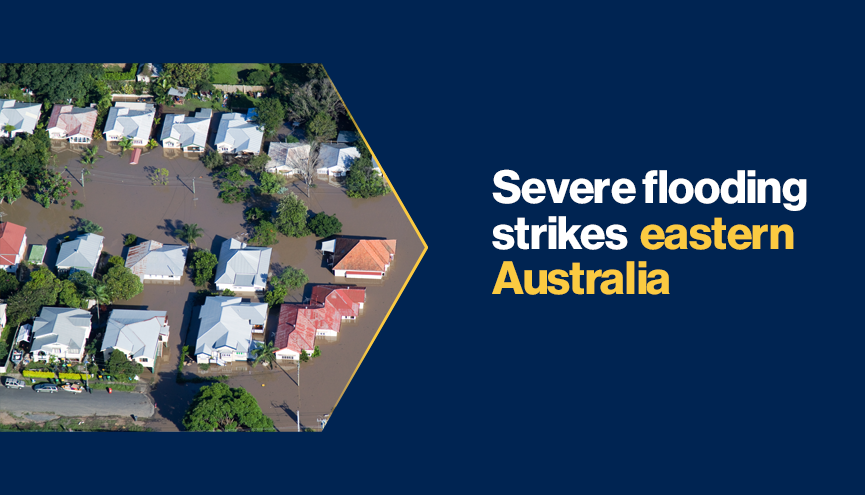Severe flooding strikes eastern Australia

Queensland is reeling from the impact of flash flooding, which has seen around 53,000 homes left without power, more than 1500 people evacuated and 2356 businesses submerged across the Australian state. The intense rain has now eased for large sections of southeast Queensland but is now moving down the east of the country towards New South Wales.
Queensland Premier Annastacia Palaszczuk called it an extreme weather event and an "unpredictable rain bomb over the entire southeast.” At least 7 people have died as a result of the floods and heavy rain.
In addition, the Insurance Council of Australia has already declared an ‘Insurance Catastrophe’ for southeast Queensland, which means that claims from affected policyholders will be given priority by insurers. The decision was made to “activate services and support for affected homeowners and businesses,” according to a statement.
As for now, travel in Queensland has been impacted. Trains are not currently running in the southeast, most bus services have been suspended and the Bruce Highway was closed but expected to reopen on Monday, says Sky News Australia. In addition, up to 1000 schools across the state have been closed and residents have been advised to stay off the roads if possible.
The state’s emergency services are still expected to making rescues throughout the coming hours and preparations are now being made for similar efforts to take place in New South Wales as the weather moves down the country.
“There are 12 evacuation orders currently in place, which are affecting close to 16,000 people in the northeast of our state,” said New South Wales Premier, Dominic Perrottet, on Monday. “If you are in one of those areas and you can evacuate safely, please do so.”
Extreme weather causes
The La Niña weather pattern, occurring every few years, is responsible for at least some of the extreme weather that Australia is currently facing. However, Sydney, also on the east coast, is reportedly experiencing its wettest summer in three decades and the most humid season in 10 years, according to The Guardian. The extent of the flooding may therefore be attributable to torrential rainfall on already saturated ground.
Indeed, some have already noted that this latest extreme weather event for the country, following wildfires, droughts and heatwaves, is tied to climate change, particularly with regards to the intensity of the rainfall.










































